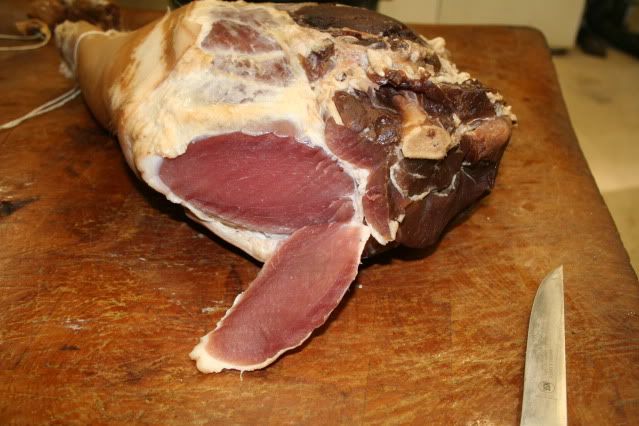rgauthier20420 wrote:Could you make something similar to this using a fresh ham from the market?
Of course. Hundred of thousands if not millions of American country-style hams are produced by smokehouses in the US every year using the exact same meat available in your market. The cut is usually called a green or fresh ham. Some smokehouses use skin-off hams because they cure. equalize, and dry faster and more uniformly - typically about nine months. I prefer skin on hams - these are usually called rough-cut hams, and might need more trimming, because they dry a little more slowly and look cool. The university of Kentucky video is excellent. I have about 300lbs of hams - some skin-on some skin-off in the cooler in equalization right now. We use both salt and curing salt on our hams because it creates and additional hurdle for some pathogens and helps keep the meat red. They are being held at about 40F right now, but I'll raise the temp in the cold room to about 50F/75%RH to imitate the increase in outdoor ambient temperature. By June they will be hanging in the smokehouse under ambient conditions.
Really, any whole muscle cut of pork can be cured and air-dried this way to excellent effect, including the butt or shoulder you buy at Sam's Club. Some decry "commercial pork", but it's what we've got. I wish it were fatter, but it's what is available. There may be some advantage to using some kind of heritage animal, but my own view is that this is a mostly romantic notion, held mostly by people who've paid the outrageous price for hand-grown pig. Let's don't let the perfect be the enemy of the good. I paid $1.44/lb for rough-cut ham (wholesale, case lot) from a packer that supplies smokehouses all over Missouri, Tennessee, and Kentucky.







